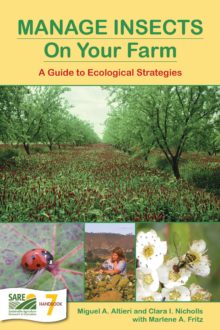While every farming system is unique, the principles of ecological pest management apply universally. Manage Insects on Your Farm highlights ecological strategies that improve your farm’s natural defenses and encourage beneficial insects to attack your worst pests.
Learn about the principles of ecologically based pest management and the strategies of farmers around the world to address insect problems. Minimize insect damage with wise soil management and identify beneficial insects to put these “good bugs” to work for you.
Examples of successful pest management strategies sprinkled throughout the book will stimulate your imagination to develop a more complex, more diverse ecosystem on your farm.
